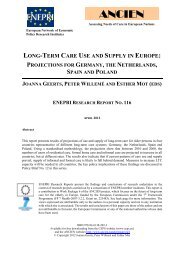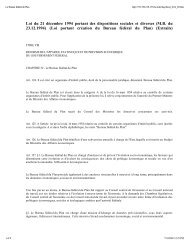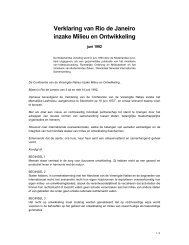LIAM 2 User Guide
LIAM 2 User Guide
LIAM 2 User Guide
You also want an ePaper? Increase the reach of your titles
YUMPU automatically turns print PDFs into web optimized ePapers that Google loves.
<strong>LIAM</strong> 2 <strong>User</strong> <strong>Guide</strong>, Release 0.7.0wants a random factor, it should be added manually (or through the use of a function like logit_score whichincludes one).• proportions: the target proportions for each category. This argument can take many forms. The mostcommon one will probably be a string holding the name of a file containing the alignment data (like in theexample above) but it can be any of the following:– a single scalar, for aligning with a constant proportion.– a list of scalars, for aligning with constant proportions per category.– an expression returning a single scalar.– an expression returning an n-dimensional array. expressions and possible values will be retrieved fromthat array, so you can simply use:align(score_expr, array_expr)– a list of expressions returning scalars [expr1, expr2].– a string treated as a filename. That file should be in the “array” format described in the Importing datasection. In that case, the proportions, expressions (column names) and possible values are read fromthat file. The “fname” argument which used to be the way to define this is still supported for backwardcompatibility.There is no technical restriction on names for files containing alignment data but, by convention, theyusually use the following pattern: start with the prefix al_ followed by the name of the endogenousvariable and a suffix _m or _f, depending on gender.• filter: an expression specifying which individuals to taken into account for the alignment. Note that if thealign() function is used inside an if() expression, its filter is adjusted accordingly (“anded” with the filter ofthe if() expression). For example:- aligned: if(condition,align(score_expr1, ’filename1.csv’),align(score_expr2, ’filename2.csv’))is equivalent to:- aligned1: align(score_expr1, ’filename1.csv’, filter=condition)- aligned2: align(score_expr2, ’filename2.csv’, filter=not condition)- aligned: if(condition, aligned1, aligned2)• take: an expression specifying individuals which should always be selected, regardless of their score. Thisargument should be used with care as those individuals will be selected unconditionally, even if that meansoverflowing the number of individuals desired to satisfy the alignment.Suppose that the alignment specifies that 10 individuals should experience a certain event, and that thereare 3 individuals who meet the conditions specified in the take. Then these 3 individuals will be selected apriori (irrespective of their score) and the alignment process will select the remaining 7 candidates from therest of the sample.A “softer” alternative can be easily achieved by setting a very high score for individuals to be taken first.• leave: an expression specifying individuals which should never be selected, regardless of their score. Thisargument should be used with care as those individuals will never be selected, even if that cause the targetnumber of individuals for some categories to not be reached.A “softer” alternative can be easily achieved by setting a very low score for individuals to be taken last.Note that even if the score for an individual is -1 (or any other negative number), it can still be selectedby the alignment expression. This happens when there are not enough candidates (selected by the filter) tomeet the alignment needs.• expressions: specify the expressions used to partition the individuals into the different alignment categories.If proportions is a file name, the column names declared in the file are used by default, but they can beoverridden using this argument. For example:22 Chapter 5. Processes
















